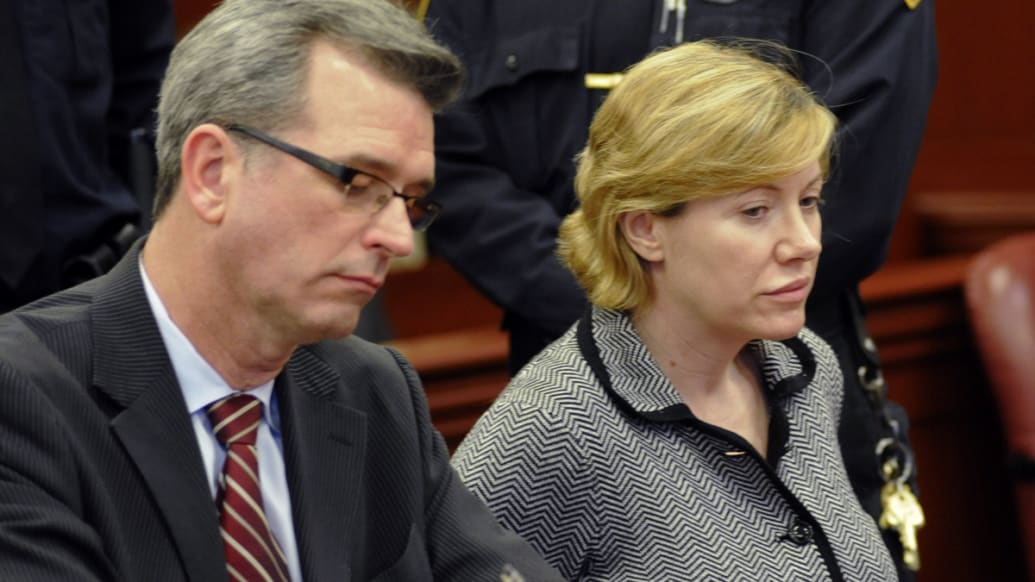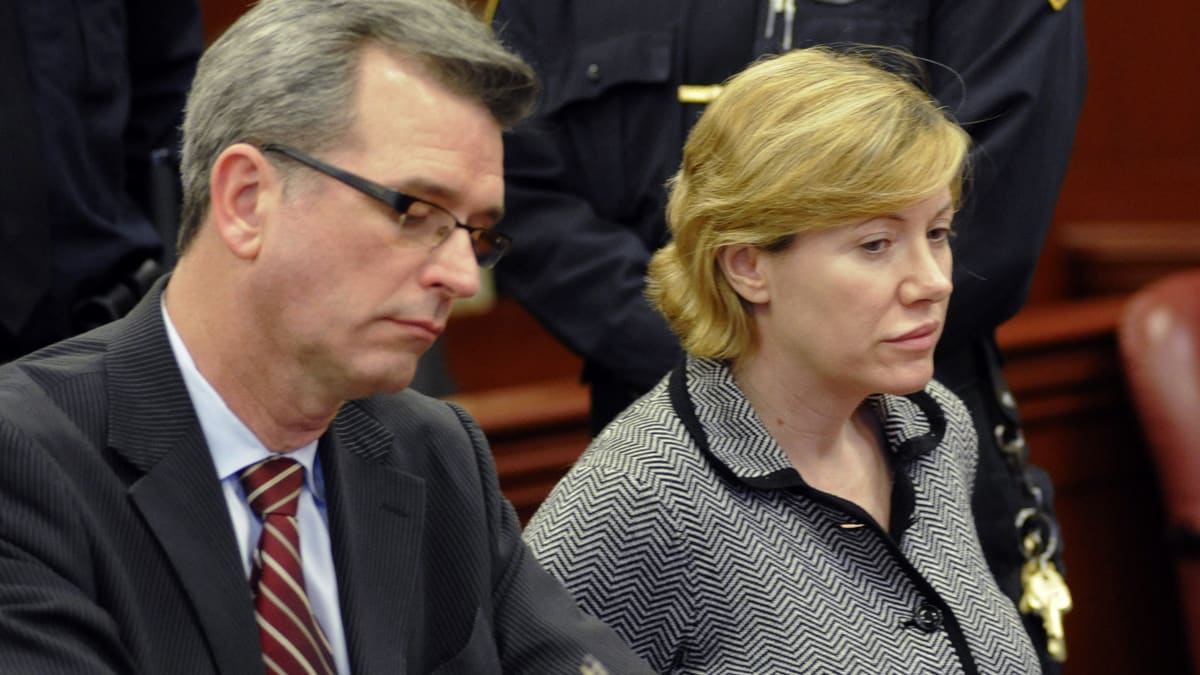Long before he was implicated in the $10 million soccer-mom madam case, accused money launderer Jonas Gayer was implicated in a $10 million case involving an old-school Jewish gangster who rode resplendent through sketchiest Brooklyn in a gold Rolls-Royce, always dressed sharper than sharp and kept astonishing sums of cash within reach. For a time he owned the fabled El Morocco nightclub.

The tough guy was Albert “Albie” Goldstein, and each weekday Red, his driver, would chauffeur him from his residence in the prestigious Sovereign in Manhattan to R-Jo Trucking at the Brooklyn Terminal Market in scruffy Canarsie. The Rolls would stop at one of the loading bays and Goldstein would step out, no more than five-foot-four, but bigger than workaday life in a custom-tailored suit and a tie that seemed a nonverbal expression of his mantra.
“Not bad for an ex-truck driver!” he often said.
R-Jo was the sole distributor for the Key Food Cooperative Supermarket chain at the time. Key Food’s board of directors iincluded Pasquale Conte, who also served as a capo in the Gambino crime family. The dealings between Goldstein and Conte no doubt presented a professional challenge to Gayer, who had worked with the IRS for 10 years before signing on as R-Jo’s controller.
In 1989 the federal government expressed its view of the firm’s finances when it charged Goldstein, Gayer, and three other individuals with 58 counts of tax fraud and money laundering involving $10 million undeclared earnings.
“This is believed to be the largest evasion-of-payment scheme of its kind ever brought in the United States,” said Brooklyn U.S. Attorney Andrew Maloney.
Gayer was allowed to plead to a single count of lying to a federal official and got off with probation. Goldstein was the government’s prime target and he had to serve time. He nonetheless managed to secure early release for good behavior after just eight months in the Allenwood Federal Correctional Complex. Authorities may have been more inclined to cut him a break because he had served in the Marine Corps. during World War II and received two Purple Heart awards. He also happened to be so likeable that even prosecutors spoke of him with a certain fondness.
“A real character,” one of them recalled just this week, characters being what makes a city such as New York more than its buildings and streets.
Respect for Goldstein as one of the last of his kind persisted on both sides of the law even after his death in 2000 at the age of 75. He is remembered with particular fondness by filmmaker Kevin Breslin, who loaded trucks as a teen at R-Jo’s warehouse back in the 1970’s while working his way through school. Breslin knew right away that Goldstein was nobody to mess with, but other qualities soon become apparent and seemed only more genuine for the accompanying gruffness.
“He was generous and he was fair,” Breslin says.
Breslin vividly recalls the day more than three decades ago when he was summoned to Goldstein’s office. He proceeded as directed up one of several unmarked back staircases. A woman sitting behind a glass partition buzzed him through one door, and then another. He entered a cavernous chamber to see Goldstein sitting behind a huge desk piled with more cash than most mortals ever behold.
“It was in uneven piles and there were many piles,” Breslin says. “It wasn’t singles, I can tell you that. I remember thinking, ‘Now, this is business. This is how it’s done.’”
Another startling sight in this second-floor office was a mint condition Ford of the earliest vintage.
“I’m sitting there thinking the whole time, ‘How did he get this up here?’” Breslin recalls.
Goldstein asked the teenaged Breslin what he wanted to do with his life. Breslin said that he was thinking of going into the entertainment industry. Goldstein allowed that one of his daughters had dreams of becoming an actor.
“Just remember, people like food as much as they do entertainment,” Goldstein advised Breslin.
Breslin then returned to the 4 p.m. to 4 a.m. shift loading trucks with food bound for Key Food supermarkets. He subsequently received another invitation from Goldstein, this time to come with a date to party at what his boss called “my club.”
Breslin went with a young woman he was seeing to the El Morocco and they found themselves sitting at one of the zebra-striped banquettes made famous by Marlene Dietrich, Clark Gable, and myriad other celebrities of a time before the despairing 1970’s, when New York seemed to have slid into an irreversible decline, becoming dark, dirty, and dangerous. Breslin watched Goldstein and his pals offer boisterous proof that New York was still New York.
“Like a bar mitzvah, or something, but it wasn’t,” Breslin says.
Thanks to such spirit, New York had come roaring back by the time Goldstein went off to prison, and then showed that even the bigger than life are not bigger than death. His former company controller, Gayer, had in the meantime discovered his true avocation.
“He always enjoyed drawing and sketching but only discovered his true talents when he met his wife, Eva,” Gayer subsequently said of himself on his website. “She inspired him to start painting when she got tired of him drawing on everything from the bills to the walls. She eventually bought him canvas and paints and since then painting has become a lifelong passion.”
The website offers samples of Gayer’s work, including an image of an automobile that could almost be a Rolls-Royce. Goldstein no doubt could have told Gayer that he was no more likely to find riches in art than Breslin was in entertainment. Gayer seems to have kept his day job and is reported to have again been charged with money laundering in connection with the prostitution case.
This time, Gayer is also reported to be facing a charge of promoting prostitution, the prostitution in question allegedly being run by the accused soccer-mom madam, Anna Gristina.
Gayer has acknowledged to the media knowing Gristina, but denies having any business dealings with her. She is said to dislike coming to the city and to prefer running her operation from her suburban home. Her alleged co-madam, Jaynie Mae Baker, apparently arrived in New York a decade ago, hoping to break into the entertainment industry. She made it only as far as the semifinals in World Wrestling Entertainment’s "Raw Diva" search. Her beauty actually may have hindered her attempt to become a standup comic. She is alleged to have supplemented her scant income from a legitimate matchmaking firm by aiding Gristina in running what some view as the best little whorehouse in New York City.
Two other women, who also seem to have come to New York seeking fame and fortune, have been charged with actually servicing the clients. One of these clients reportedly include former Sen. John Edwards, who according to one press account patronized Gristina’s service in 2007 during a New York fundraising trip for his presidential bid. (Through his lawyer, Edwards denied involvement “with any prostitute or service.”)
Other names may surface as the Manhattan district attorney's office continues its investigation into this alleged madam whose preference for things suburban seems somehow fitting in a New York that has become almost too bland. Even Times Square, once the capital of sleaze, has become the domain of chain stores such as are found at any mall; instead of genuine New York characters such as Albie Goldstein, we have pretenders such as Anna Gristina.
In keeping with our present times and our sorry lack of "real men," Gayer is said to be cooperating with prosecutors.
As for Breslin, he has gone on to make fine films about such truly important subjects as the widows of 9/11, the victims of the Virginia Tech massacre, and the fervent believers of Occupy Wall Street. But there are definitely no piles of money on his desk. And he has not gazed through a lens to see anybody like Albie Goldstein.
“This guy roamed the streets in a gold Rolls-Royce in the dark and dreary days,” Breslin says.
Breslin still cannot figure how Goldstein got a mint antique Ford into that second-floor office.
“Sometimes, I almost wonder if I was hallucinating,” Breslin says. “But I wasn’t. It was real.”

